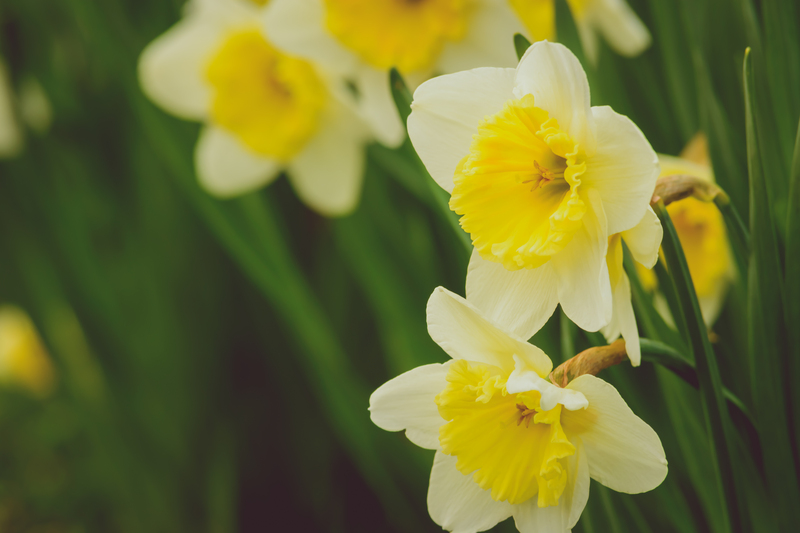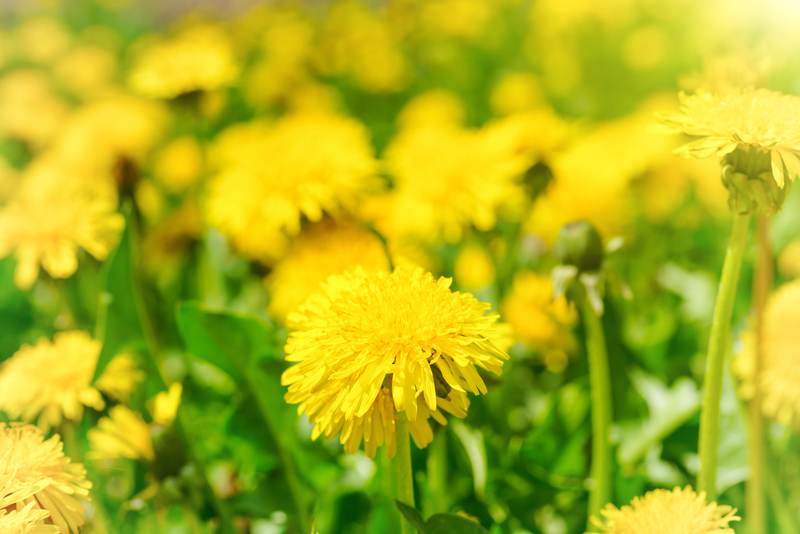Comprehensive Orchid Care for Beginners
Posted on 19/09/2025
Comprehensive Orchid Care for Beginners
Orchids are among the most captivating and diverse flowering plants, famous for their unique beauty and remarkable adaptability. For beginners, caring for orchids may seem daunting, but with the right orchid care guide, anyone can cultivate and enjoy these exquisite blooms at home. This article provides a comprehensive overview of orchid care for beginners, addressing everything from selecting the right orchid to ongoing maintenance, so you can confidently grow these stunning plants.

Understanding Orchids: Species and Varieties
Before delving into beginner orchid care, it's crucial to understand that orchids belong to one of the largest and most diverse plant families, Orchidaceae. With over 25,000 species and thousands of hybrids, orchids come in all shapes, sizes, and colors. While some species require advanced care, many varieties are particularly tolerant and ideal for novices.
Popular, Easy-to-Grow Orchids for Beginners
- Phalaenopsis (Moth Orchid): Known for its long-lasting blooms and minimal demands. It's the most common household orchid and perfect for those starting orchid cultivation.
- Dendrobium: Offers profound color diversity and is relatively forgiving of newbie mistakes.
- Cattleya: Famous for their vibrant blooms and fragrance, they tolerate a range of indoor conditions.
- Oncidium (Dancing Lady Orchid): Appreciated for their playful flower sprays and adaptability.
Choosing Your First Orchid
When beginning your orchid-growing journey, select a healthy, mature plant from a reputable nursery. Here's what to look for:
- Leaves: Should be firm, green, and unblemished.
- Roots: Healthy roots are white or green and plump. Avoid shriveled, brown, or mushy roots.
- Buds: A few unopened buds indicate future blooms. However, avoid plants where all flowers have dropped.
Choose a species rated easy for novices, such as Phalaenopsis or Dendrobium. Consult staff or research online for additional tips on selecting your first orchid.
Orchid Light Requirements
Light is one of the most critical factors in successful orchid care for beginners. Orchids evolved in filtered jungle light, so understanding their needs is vital.
How Much Light Do Orchids Need?
- Phalaenopsis: Prefers medium, indirect light. A north or east-facing windowsill shielded by a sheer curtain is ideal.
- Dendrobium & Oncidium: Can tolerate slightly brighter, filtered sunlight.
Too little light will result in poor flowering, while too much direct sun can scorch leaves. A good indicator: orchid leaves should be bright green, not dark or yellowish.
Tips for Providing Optimal Light
- Place your orchid near a window with sheer curtains or use blinds to diffuse harsh sunlight.
- Rotate the plant weekly to ensure even exposure on all sides.
- Supplement with grow lights if natural light is insufficient - especially during winter.
Watering Orchids Properly
One of the biggest mistakes made by those new to orchid cultivation is overwatering. Unlike typical houseplants, orchids are epiphytes in nature, growing on trees and absorbing moisture and nutrients from the air.
Signs Your Orchid Needs Water
- Silvery white roots: Indicate dryness and your orchid is ready for water.
- Green roots: Moist and hydrated - do not water just yet.
- Wrinkling or leathery leaves: Possible underwatering (though check roots first).
How to Water Orchids
- Water in the morning to allow leaves and roots to dry by nightfall.
- Thoroughly soak the growing medium until water drains freely from the pot's holes.
- Let the plant drain completely. Never let an orchid sit in water (this can cause root rot).
- Frequency depends on your environment, pot size and type of orchid, but a general rule is every 7-10 days.
Tip: Use tepid, filtered or rainwater for best results. Avoid softened water due to excess salts.
Best Potting Media and Containers for Orchids
The right growing media is essential for beginner orchid care. Standard potting soil is unsuitable; orchids need fast-draining, airy substrates that mimic their natural environment.
Recommended Orchid Potting Mixes
- Bark Mix: Most common. Provides excellent aeration and drainage.
- Sphagnum Moss: Retains moisture while remaining light and airy. Ideal for mini orchids.
- Coconut Husk Chips: Eco-friendly and holds moisture well.
- Perlite & Charcoal: Mixes well with bark to aid drainage and neutralize acids.
Orchid pots should have:
- Plenty of drainage holes
- Clear plastic or slotted ceramic designs for root health observation
Orchid Temperature and Humidity Requirements
Most beginner-friendly orchids thrive in normal household conditions, but understanding their temperature and humidity needs is key for healthy growth.
Temperature
- Daytime: 65?F-80?F (18?C-27?C)
- Night: 55?F-65?F (13?C-18?C)
A slight drop in nighttime temperature often triggers flowering in many species. Avoid placing orchids in drafts or near heating/cooling vents.
Humidity
- Ideal Range: 40-70%
- If your home is dry, use a humidity tray (shallow dish with water and pebbles under the pot), group plants together, or mist the air around your orchid (avoid soaking flowers or leaves).
- Consider a small humidifier for consistent moisture during dry seasons.
Fertilizing Orchids - Feeding for Vigorous Growth
Orchids require feeding, but not as heavily as typical houseplants. A weak fertilizer solution suffices to promote lush leaves and abundant blooms.
Best Practices for Fertilizing Orchids
- Use a balanced, water-soluble orchid fertilizer (like 20-20-20) diluted to quarter of the recommended strength.
- Feed "weekly, weakly" during the active growing period (spring through fall).
- Flush the pot with plain water once a month to prevent fertilizer salt buildup.
- Reduce feeding during winter or when your orchid is not actively growing.
Common Signs of Fertilizer Problems
- Leaf tip burn: Over-fertilization.
- Yellow, limp leaves: Possible under-fertilizing or root issues.
Repotting Orchids - When and How
Repotting is an essential part of successful orchid care for beginners. Orchids need repotting every 1-2 years to replenish potting media and prevent overcrowded roots.
Signs Your Orchid Needs Repotting
- Roots are growing out of the pot.
- Potting mix looks broken down, moldy, or compacted.
- Stunted growth and lack of blooms.
How to Repot Orchids: A Step-by-Step Guide
- Choose a slightly larger orchid pot and fresh orchid mix.
- Gently remove your orchid from its old pot. Trim dead or rotten roots.
- Place the orchid in the new pot, holding it upright while you fill in around the roots with fresh media.
- Water lightly and keep in filtered light until new growth appears.
Common Problems in Orchid Care and Solutions
Even beginners who follow the best orchid maintenance tips may face issues. Here are frequent challenges and ways to resolve them:
Pest and Disease Management
- Mealybugs, Scale, Spider Mites: Wipe leaves with a soft cloth dipped in isopropyl alcohol; treat with insecticidal soap if infestation is severe.
- Fungal/Bacterial Spots: Remove affected parts with sterilized scissors; apply a fungicide and improve air circulation.
- Yellowing Leaves: Usually signals overwatering or old leaves dying off naturally. Check roots and adjust care.
Why Isn't My Orchid Blooming?
- Insufficient light - move to a brighter location.
- Fertilizer deficiency - resume "weakly, weekly" feeding.
- Inadequate temperature drop at night or improper repotting can stall flowers.
Orchid Care Calendar: Year-Round Maintenance
To keep orchids thriving, maintain a seasonal care routine:
- Spring: Resume fertilizing and increase watering as growth begins. Repot if needed.
- Summer: Maintain consistent moisture and shaded light. Watch for pests.
- Fall: Reduce watering and feeding as orchids enter rest periods. Ensure nighttime temperature drops for bud formation.
- Winter: Keep in brightest spot available. Limit watering and avoid drafts.

Orchid Care FAQs for Beginners
How often should I water my orchid?
Most orchids need watering every 7-10 days, but always check roots and potting media rather than relying on a set schedule.
Can I grow orchids in my bathroom?
Yes! Bathrooms often provide the warm, humid conditions orchids love, provided there is enough filtered light.
Should I mist my orchid?
Light misting raises humidity but avoid saturating the foliage to prevent disease.
Do orchids go dormant?
Some varieties (like Dendrobium and Catasetum) have a rest period; reduce water and fertilizer during this time.
The Joy of Orchid Growing: Final Tips for Beginners
- Observe your plant - Orchids "tell" you what they need via roots, leaves, and blooms.
- Don't overthink it - Simplicity and consistency are key to successful orchid cultivation.
- Enjoy the process - The reward is a stunning, long-lasting display of living art you nurtured!
In conclusion, with patience and these comprehensive orchid care basics, beginners can confidently grow orchids and enjoy their exotic beauty for years to come. Experiment with different varieties, pay attention to your orchid's needs, and relish the unique experience of growing one of nature's most fascinating flowers.

